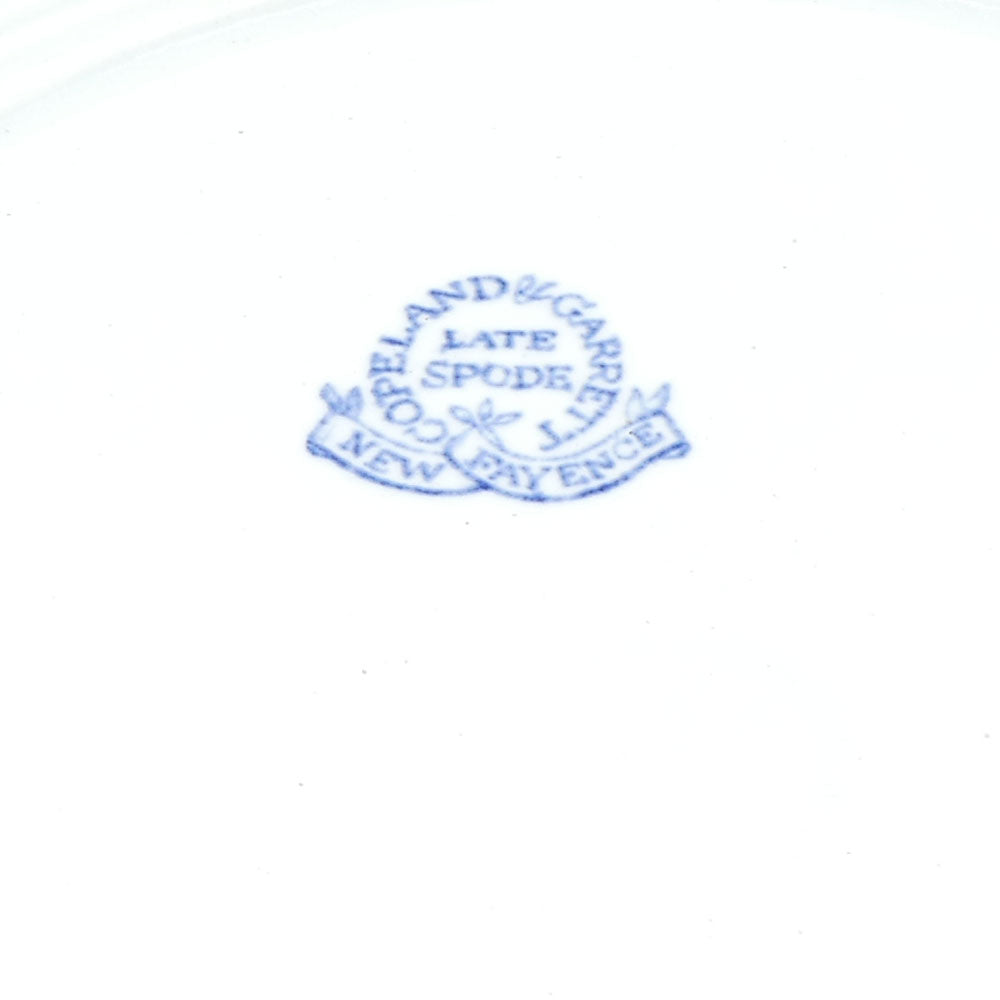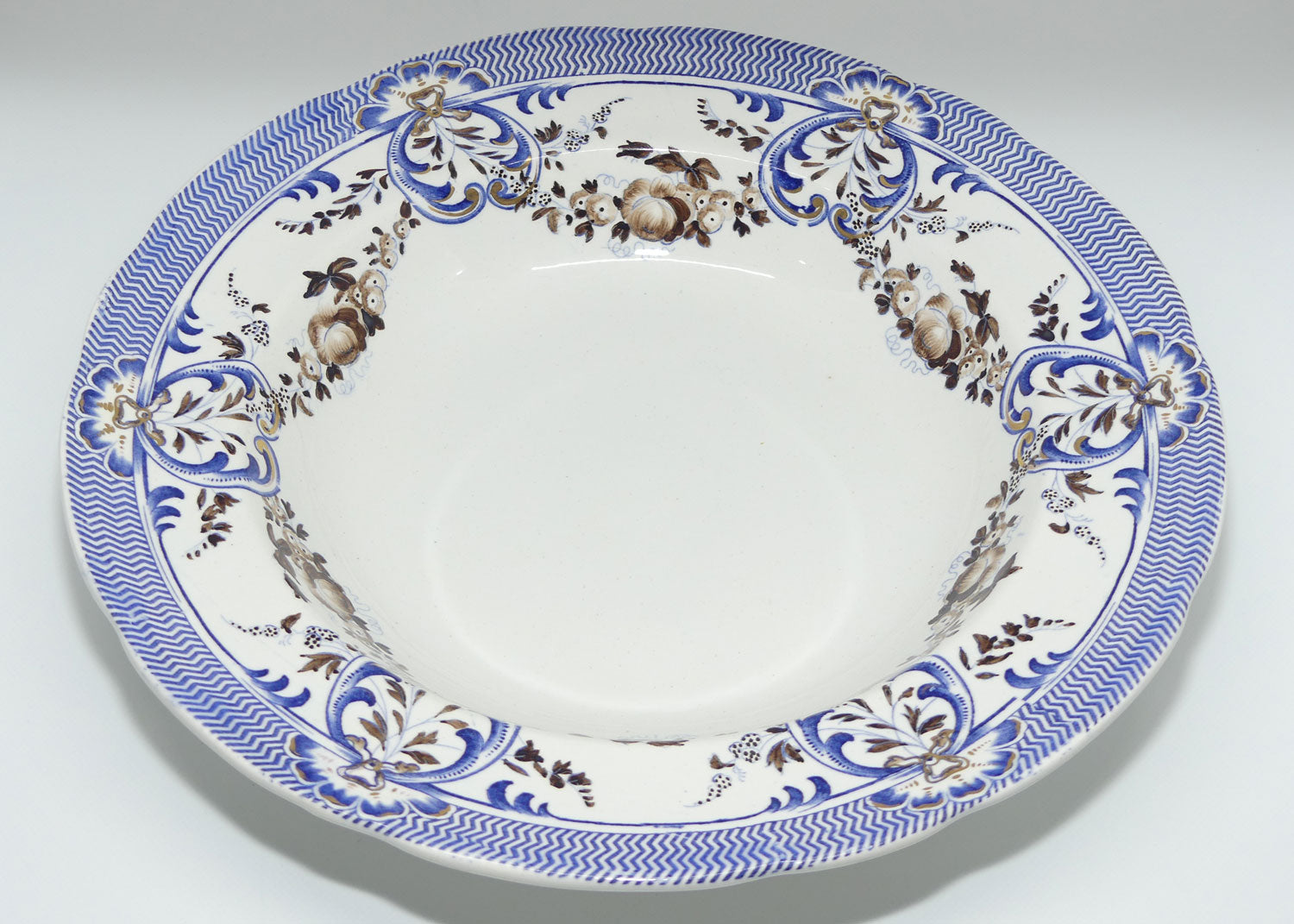Description
c.1833 - 1847 | Regency era
Approx 25.5cms (10") diameter
Approx 4cms (1 2/3") deep
In excellent condition
GUARANTEED free from damage and repair
What is faience | fayence?
Faience or fayence, is a tin-glazed earthenware made in England, France, Germany, Spain, and Scandinavia.
The tin glaze used in faience is actually a lead glaze that has been rendered white and opaque by the addition of tin oxide. In the production process, an unglazed article is fired in a kiln and is then dipped in the tin glaze, which is allowed to dry. Designs are then painted on the glaze, which sets them off and preserves them during a second firing at high temperature. The colours used to paint designs were limited to the few that could tolerate high heat until the 18th century, when a low-fire overglaze enamel was used.
Region:
Condition:
Condition Descriptions
In the main we sell delicate, individually made antique and collectible items that have had a prior ownership history and prior use. We believe that we are extraordinarily exacting in our condition reports of our items – and we describe our items with knowledge and a critical eye developed over decades of experience handling an enormous quantity of similar items. We make every human effort possible to detect or disclose significant age related soiling, damage through use or misuse, or restoration to damage to items on this website. Given the age of the items we sell – minor and insignificant wear, blemishes consistent with the manufacture techniques used in the production of an item or simply evidence of age of a previously owned item (for example fine, clean crazing) is not damage - nor significantly detracting.
For further details refer Clause 2 in our Terms of Service, which you can find here.
Shipping Times
We do not guarantee shipping times - while all best efforts are made to dispatch in a timely manner, we do not guarantee shipping times. If receipt of your order is time sensitive - please contact us to discuss requirements before placing an order, not after placing an order. We cannot guarantee carriers delivery times - they are beyond our control.
Returns and Refunds
Items can be returned if not as described for a refund of the purchase price and shipping – provided that you notify us within 7 days of receipt of the item of your intention to do so. You can do this by emailing or phoning us.
We consider significantly not as described as a failure on our part to detect or disclose significant soiling, damage or restoration. Given the age of the items we sell – minor and insignificant wear, blemishes consistent with the manufacture techniques used in the production of an item or simply evidence of age like fine, clean crazing is not reason to return an item.
Order Cancellations
1.1 If for some reason we cannot supply an item you have ordered (due to our error or an item being lost), we will refund you in full. This may take a few working days for the credit to appear in your account due to banking vagaries. Please note sometimes refunds can differ in quantum due to currency conversions and exchange rate differences.
1.2 If you cancel an order (before we dispatch to you) due to change of mind or concerns about shipping times - we will refund you for the purchase price of the item LESS $25 in administration fees AND a 2.5% restocking surcharge (which is essentially what our bank charges us to receive your payments via credit cards or online payment methods, together with currency conversion fees and other ). Your change of mind incurs expenses for us - these are charges we incur and you pay - we should not lose because of your decision.
1.3 Once an order is dispatched to you, orders cannot be cancelled under any circumstances.
Buyers Remorse
Given the delicate nature of the items we sell and the practicalities of logistics of same, we do not refund for change of mind or buyers remorse. If you purchase an item and when you receive it you find that you already have it in your collection – we will exchange your purchase for other items that we have or failing that, extend a store credit, but the shipping in both directions is your cost. For exchanges and returning for store credit please notify us within 7 days of receipt of the item of your intention to do so. You can do this by emailing or phoning us.
Returning your Item to Us
On returns, the items must be well packed and returned to us in the same high quality manner in which they were sent to you.
Duties and Taxes on Export Sales
We sell our items on a delivered taxes unpaid. Taxes and duties on items ordered overseas (from us located in Australia) are your responsibility. If you fail to pay the duties and taxes on your item and it is returned to us - you WILL NOT be refunded in full.
You will be refunded your purchase price LESS:
(1) the reasonable shipping charges in both directions; and
(2) a $50 as an administration and cancellation fee for receiving the order, packing the order and processing the sale; and
(3) a 2.5% restocking surcharge (which is essentially what our bank charges us to receive your payments via credit cards or online payment methods, together with currency conversion fees and other).
Your failure to pay legal taxes and duties incurs expenses for us - these are charges we incur and you pay - we will not lose because of your decision.
We do not refund taxes and duties if the item has been exported and you desire a return. These are your costs, not ours.
AUSTRALIAN PURCHASES
All Australian purchases are professionally packed to the the highest possible standard and are sent fully Insured Australia Post Signature on Delivery (this is not an option - it is done for your security, and ours). This is a fully trackable service. In some cases with extremely valuable or large items we may deliver personally.
Full details of how we pack are shown in the blog article The All Important Packing Process.
INTERNATIONAL PURCHASES
All International purchases are professionally packed and when Shipping Internationally we use a combination of Australia Post Pack and Track and Australia Post Express Post International (EMS Courier, depending on package size, destination and value of items). All parcels are able to be tracked on line. Full details of how we pack are shown below.
Rest assured, in every transaction, customer satisfaction is paramount and we pack to the highest possible standard.
Full details of how we pack are shown in the blog article The All Important Packing Process.




